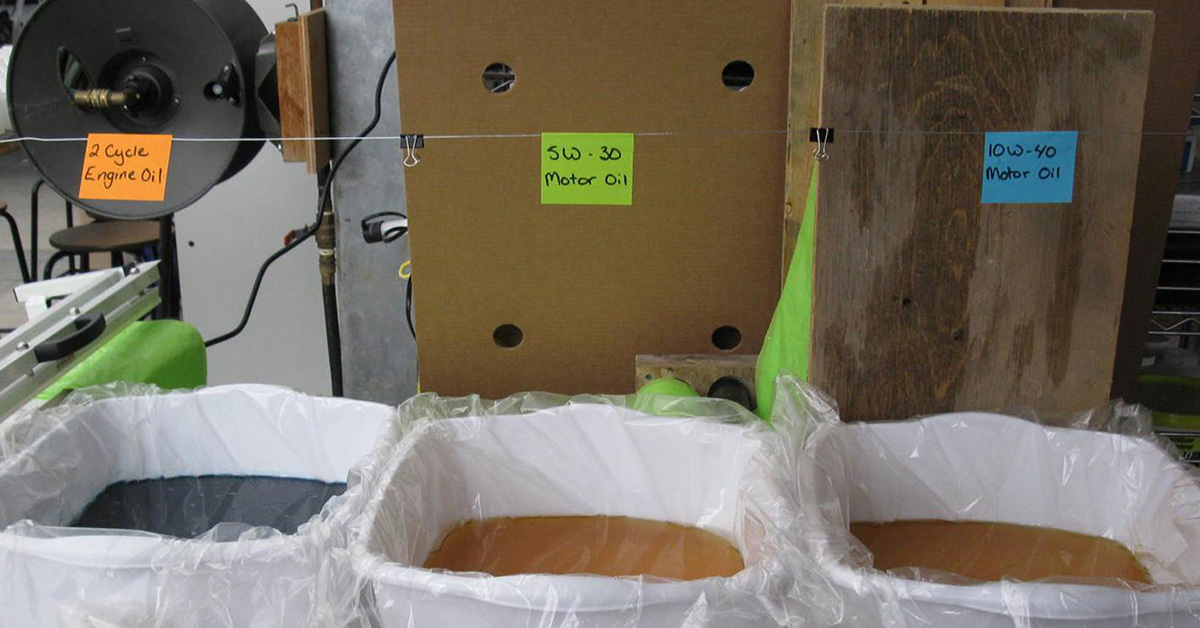Oil and gas spills have the potential to do serious harm in aquatic environments.
Containing and collecting oil quickly can reduce the drastic effects of a petroleum spill.
The Centre for Alternative Wastewater Treatment (CAWT) at Fleming College has been working with the Murrenhil Corporation on applied research projects on products that can be used as a first response oil containment system.
Rapid Oil Containment (ROC) Barrier™ and Oil Cling Pads™ are two forms of polyethylene laminate pads that can be thrown onto a spill in a lake or ocean to soak up oil or gas. The ROC Barrier™ is made up of oil adsorptive pads designed to protect aquatic environments from oil and gas by collecting the hydrocarbons without also collecting water.
“Unlike similar absorbing materials, ROC Barrier is an oil-adsorbing poly that is hydrophobic. It floats on water but will not absorb water,” says Glenn Murray, President of Murrenhil Corporation.
These adsorptive pads are folded into packages small enough to be carried in small watercrafts and stored in marinas or ships.
Fleming College researchers assisted with research and development, as well as product testing and verification. As a result of this applied research, Murrenhil was able to improve their product and bring the ROC Barrier™ to market. CAWT staff also assisted with patenting and with marketing.
Murrenhil has since met new contacts that can further distribute and increase sales of the product, and is now approaching worldwide industry leaders for global licensing opportunities.
“Our partnership with the CAWT has proved to be invaluable, and imperative to Murrenhil Corporation’s success,” Murray says.


